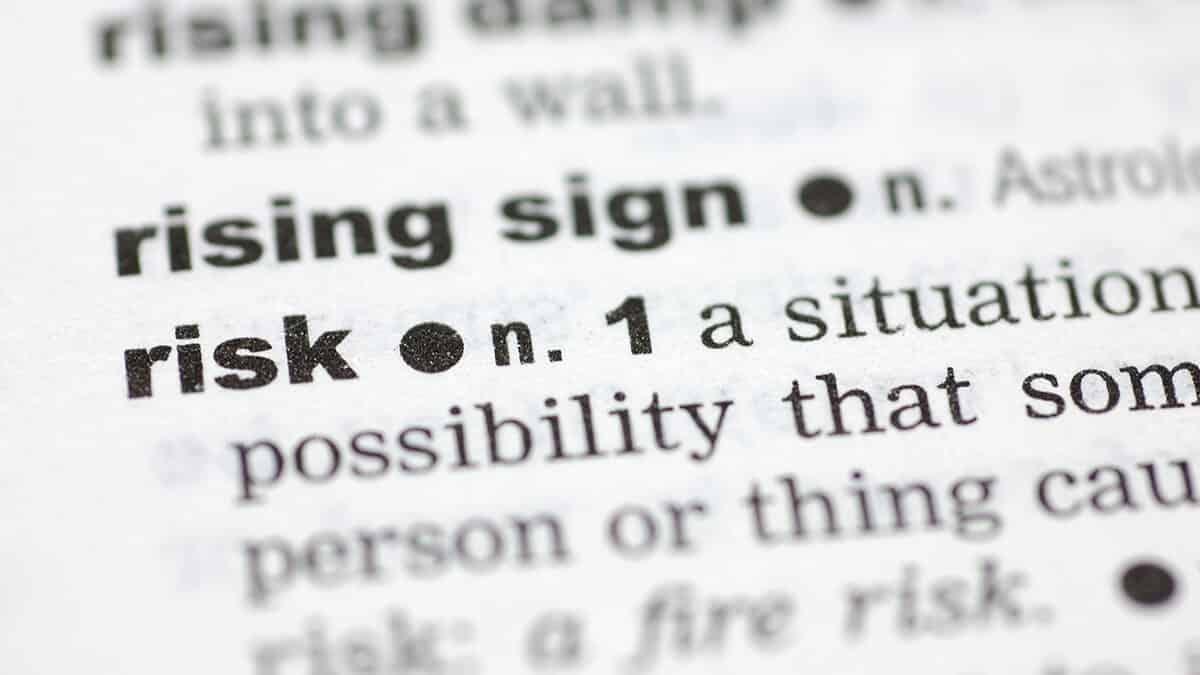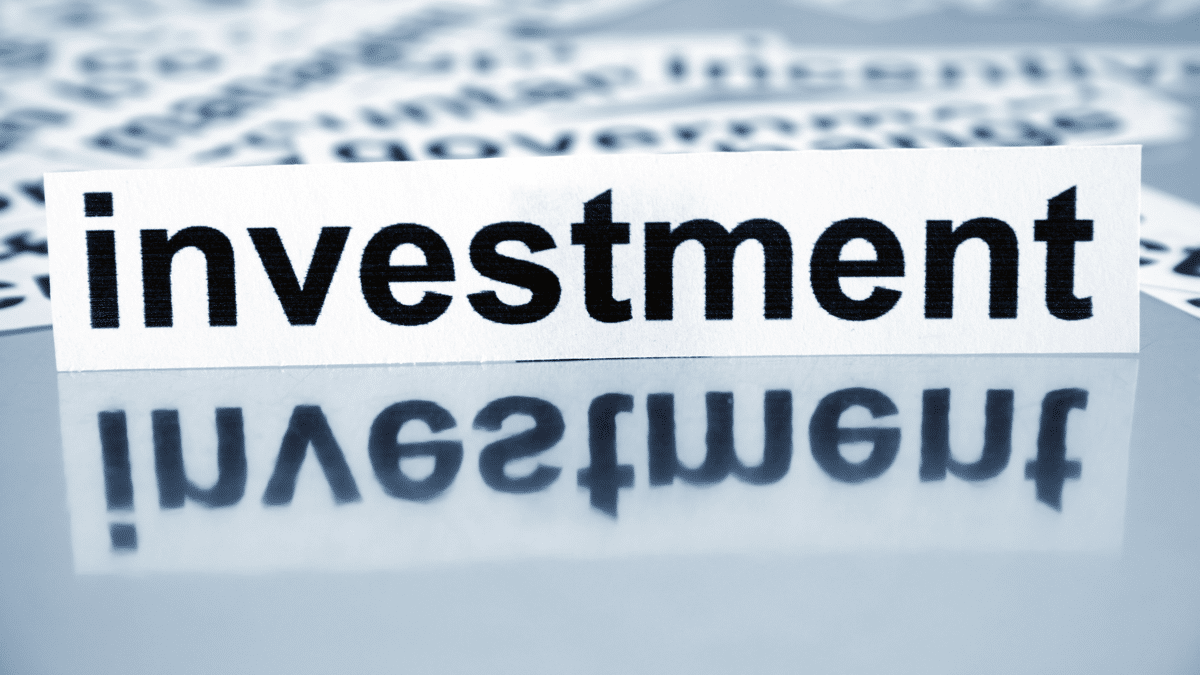In this guide
Choosing investments with the potential to earn high returns sounds like a no-brainer, until you consider the risks.
All investments carry risk. Deciding on the level and type of risk you’re comfortable with is one of the fundamental steps to ensuring your super is working hard to produce the returns you need to fund your retirement, while also giving you the confidence to stick with your strategy through varying market conditions.
You might already have an idea of your personal tolerance for risk but perhaps you’re not entirely sure of where your partner sits on the risk spectrum. Either way, it’s a good idea to get a clear understanding of your individual and/or combined risk appetite and how that fits in with the range of investment options available when it comes to your super.
Re-thinking risk
The first step to understanding your risk profile and taking control of your investment choice is to carefully consider the risks you are exposed to.
Investment risk is often described as a simple spectrum, with stable assets like cash and fixed interest carrying less risk, and more volatile assets like property and shares carrying more. This picture is accurate when you’re thinking about the risk of short-term loss, but the trade-off is that the more volatile assets provide a higher return in the long term.
When making investment decisions it is critical to consider the whole picture. If you invested solely in ‘secure’ assets you would be very unlikely to suffer significant investment losses, but your investment would grow slowly. This increases the risk that your assets will not grow quickly enough to keep up with inflation (known as inflation risk) and the chance that your assets will not be sufficient to last for life after retirement (longevity risk).
On the other hand, if you invested solely in shares, property and alternative investments, your portfolio would have a high chance of losing value in any one year, but the expected return after a long period would be significantly higher. Both inflation risk and longevity risk would be lower than a ‘secure’ portfolio.
Particularly when it comes to super, the risk that your balance doesn’t grow enough can be more important than the risk of making a loss in the short term. Super is, by nature, a long-term investment – for most of us it’s locked away until at least age 60 and then expected to provide income for life after retirement.
Because of the influence of time, the type of risk you’re happy to accept for your super may be very different from other investments.
For example, if you want to save a deposit to purchase a home in four years’ time, you’re probably not willing to risk an investment loss that may take years to recover from. However, if you’re considering super that you’re not planning to access for another 20 years, a loss this year is less important. You may be more than happy to accept that risk in exchange for a higher return in the long run, knowing your balance has time to recover losses and go on to reach new highs.
The Standard Risk Measure
Since June 2012, on the instigation of APRA, super funds have been required to include a risk rating for all their investment options. Called the Standard Risk Measure, the aim is to provide members with a simple but consistent means of comparing the risk of different investment options, both within and across super funds.
Risk is measured according to the likely number of negative annual returns over a 20-year period. The lower the number of estimated negative returns, the lower the score on a rating of 1 to 7.
For example, an investment option that fund trustees estimate is likely to produce a negative return less than 0.5 times in 20 years would be in risk band 1, while an investment option likely to produce a negative return less than one year in 20 but more than 0.5 times would be in risk band 2, and so on. You can see all seven risk bands with their estimated negative years in 20 outlined in the table below.
Standard Risk Measure
| Risk band | Risk label | Estimated number of negative annual returns over a 20-year period |
| 1 | Very low | Less than 0.5 |
| 2 | Low | 0.5 to less than 1 |
| 3 | Low to medium | 1 to less than 2 |
| 4 | Medium | 2 to less than 3 |
| 5 | Medium to high | 3 to less than 4 |
| 6 | High | 4 to less than 6 |
| 7 | Very high | 6 or greater |
Source: APRA
You can find the risk rating of investment options on your fund’s website, along with other details such as performance targets, actual past performance over different time periods, and asset allocation.
For MySuper options, the information is clearly set out on a single page called the MySuper dashboard, also available on your fund’s website.
Limitations of the Standard Risk Measure
SuperRatings executive director Kirby Rappell says that although the Standard Risk Measure gives the end user a relatively simple way to understand how risky an option may be, there are a couple of challenges with the measure.
“It doesn’t explain how large the negative return may be; a 2% fall or a 20% fall are quite different experiences in an investor’s mind. Secondly, there can be variations in the assumptions used by providers when calculating risk scores,” he says.
The Standard Risk Measure may also be undermined by a lack of consistency in the labels that funds give their investment options. For example, UniSuper’s Balanced option is in risk band 6, indicating high risk. While over at QSuper, its Balanced option is in risk band 4, or medium risk, which is probably closer to the level of risk members might assume from a balanced asset mix.
Risk profile quiz
We’ve put the following quiz together to help you understand your risk profile (choose the answer most appropriate to your situation). We’d like to point out that we’re not academics or psychologists, but we hope this quick questionnaire will help you clarify what kind of investments you’re comfortable with.
Remember that your answers to the questions could be different when you’re thinking about different investments. You could try the quiz when thinking about your super and then take it again when thinking about investing outside super to see if your attitude to risk varies.
1. Which of the following statements best summarises your objective?
- A. Achieving a stable, predictable return is my highest priority
- B. I prefer predictable returns, but I am OK with some fluctuations if my balance will grow faster
- C. Investment growth is more important than stability
- D. My first priority is high returns, even if they fluctuate significantly, including negative years
2. How important is it to you that your investment keeps pace with inflation (i.e. retains its purchasing power)?
- A. Not important – I would keep it under the mattress if I could
- B. Slightly important – just keeping pace is OK
- C. Fairly important – I’d like my return to beat inflation and generate some growth in purchasing power
- D. Critical – my priority is to grow my savings significantly more than inflation
3. How long would you be prepared to wait for your investment to return to its original value after making an investment loss?
- A. No time at all. I can’t tolerate a loss
- B. 1 year. A short-term loss is ok
- C. 3 years
- D. 5 or more years
4. How do you plan to use your super after retirement? (for super only)
- A. Take a lump sum to repay debts or spend immediately
- B. Spend it within 5 years
- C. Spend most of it within 15 years
- D. Draw on it evenly throughout retirement
5. How much would you be prepared to lose in a market downturn?
- A. Nothing
- B. 3% of my investment
- C. 7% of my investment
- D. 10% or more or my investment
6. Would you consider borrowing to invest?
- A. No
- B. Maybe
- C. It depends on the investment
- D. Definitely yes
7. How often could you live with your portfolio having a negative year?
- A. Never
- B. Once every 15 years
- C. Once every 8 years
- D. Once every 5 years
8. How long are you investing for?
- A. Five years
- B. 10 years
- C. 15 years
- D. 20 years or more
9. What would you do with a $20,000 windfall?
- A. Keep it in a term deposit
- B. Split it between a savings account and an ASX 200 index fund
- C. Invest it in a diversified equity portfolio
- D. Invest it in some interesting alternative assets with a high-return profile
10. If your investment fell in value by 20% what would you do?
- A. Switch my whole balance to cash
- B. Move some of my investment into more stable assets
- C. Do nothing and expect the investment to recover
- D. Invest more money to take advantage of low asset prices
Your risk profile results
Mostly A – Defensive
If you chose mostly A, then you are very concerned by any prospect of losing money. This is an important consideration when choosing your investment profile and knowing this will help you steer away from investments that make you nervous.
Mostly B – Conservative
You’re more comfortable with risk but still don’t want to take on too much, regardless of the potential return. A conservative risk profile means you are focused on preserving the value of your investments and existing investment income.
Mostly C – Moderate
You are looking for the higher returns that a higher risk profile will deliver. You are comfortable with a year of negative returns here and there as you know that you will be able to recoup your losses over future years.
Mostly D – Aggressive
You prefer to invest in assets that have a higher risk as there is a higher chance of return. You can tolerate big falls in your investments because you understand that with the risk levels you are comfortable with, you will be able to recoup your losses (and then some) over the longer term.
Investment profiles
Whether you have an SMSF or are in a retail, corporate or industry super fund, you will need to decide on an investment profile. For SMSFs this will be included in your investment strategy, but if you invest via a larger fund, you will have a range of investing options available to you.
Super funds now provide a vast range of options to members – some funds even offer the option of investing directly in shares and term deposits – but they will also include at least five or six pre-mixed investment options. These options are generally defined by their allocation to growth assets and defensive assets. Equities (shares), commodities and private equity are considered growth assets. Cash and fixed interest (bonds) are considered traditional defensive assets. Property and infrastructure have both growth and income-generating properties, which leads them to being classified as mixed growth/defensive assets. Property and infrastructure can also be held in physical form or as listed securities, which have different risk profiles.
The following table is a rough guide to the kinds of investment profiles that you will be able to choose from, starting with the most aggressive risk profiles, tapering down to the most defensive.
Knowing your risk profile is very useful when it comes to selecting the most appropriate investment option for your super. Selecting an option closely aligned to your risk profile means you are more likely to feel comfortable with how your super is invested and less likely to panic during the normal market ups and downs.
| Risk profile | Percentage of growth assets | Percentage of defensive assets |
|---|---|---|
| High growth | 98% | 2% |
| Growth | 80% | 20% |
| Balanced | 70% | 30% |
| Moderate growth | 55% | 45% |
| Stable | 35% | 65% |
| Income plus | 30% | 70% |
Discover how to switch your investment option.
Investing over your lifecycle
Your investment profile and asset allocation should be something you review periodically. Your capacity for risk will be different during different stages of your life.
When you are young and have plenty of time to recoup any losses, you can afford to have larger allocations to riskier growth assets. But as you get older and are more protective of your capital as you get closer to retirement, you may look to switch to a more conservative asset allocation with a higher allocation to defensive assets. Even so, it is still important to keep a reasonable allocation to growth assets in retirement. Depending on your health, you could be retired for twenty years or more.
If you are an SMSF trustee, your investment strategy and asset allocation should be considered annually during trustee meetings. If you have your super in a large fund, you should review your investment option at least every five years or so to see if it is still appropriate.
Many super funds also offer lifecycle investment options, which automatically reduce your exposure to higher risk growth assets as you age.
Direct investments
As they compete with the growing SMSF sector, large APRA super funds are offering the ability to tailor your investment choices almost as much as you could in an SMSF. The direct investment options they offer may be limited to the ASX/S&P 200 or ASX/S&P 300 shares, but they often include exchange traded funds (ETFs), which would enable you to add international equities to the mix.
There are hundreds of ETFs available on the ASX, across a range of asset classes, including fixed income and global equities. There are also sector-specific and strategy-specific ETFs, which would allow a very high degree of diversification in a direct investment portfolio.
When choosing direct investments with your super fund, it is just as important to understand your risk profile and apply it to your investment choice. Investing in a global technology ETF would not be advisable for somebody with a defensive risk profile and would be more suited to somebody with an aggressive risk appetite.
There are also parameters around how you can invest in direct investment options. You may need to keep a certain amount in another investment option within the super fund (usually around 10%), and there will most likely be a minimum amount that you need to have in super to be able to access the direct investment choice. To limit concentration risk, there may be a maximum amount (around 20%) that can be invested in any one share.
Investments via a direct investment option will be held in your fund’s name, not yours. In addition to certain shares and ETFs, you should also be able to invest via the direct option in term deposits.
The bottom line
Investing for retirement is not just about how much you can make before you retire, it is also about what level of risk you are comfortable with to get there. A decent balance is obviously desirable but so is a good night’s sleep.







Leave a comment
You must be a SuperGuide member and logged in to add a comment or question.